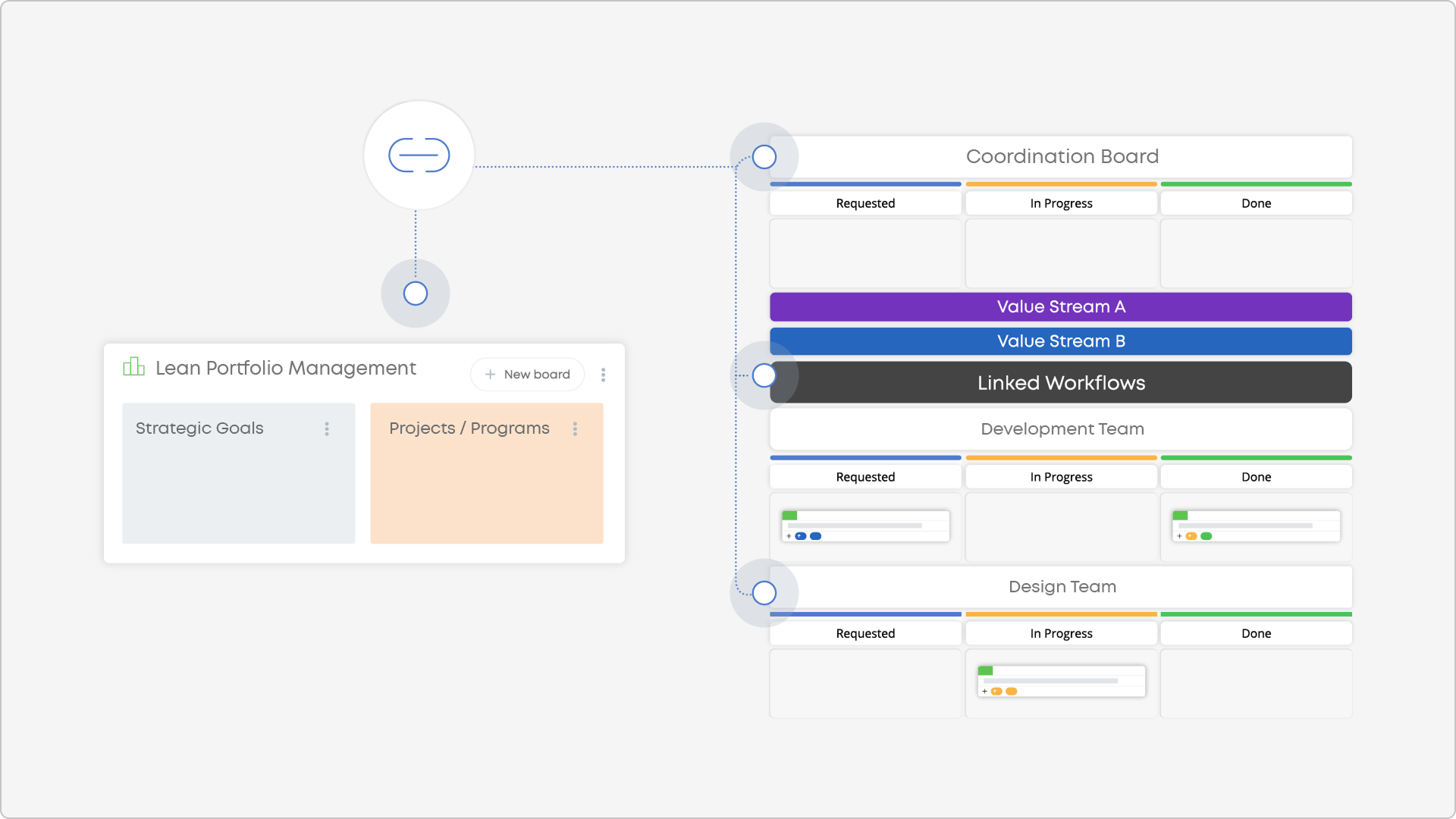Key Takeaways
-
Definition: Strategic goals are long-term objectives that define a company's direction and align efforts across all levels.
-
Importance: They guide decision-making, resource allocation, and adaptability, ensuring focus on value creation.
-
Frameworks: SMART goals, OKRs, Balanced Scorecard, and Hoshin Kanri help define, track, and refine them.
What Are Strategic Goals?
Strategic goals are high-level, long-term objectives that translate a company's vision and mission into concrete outcomes. They provide the "north star" that keeps leaders and teams aligned. Typically set annually, they define where the organization wants to be in the future and act as a filter for prioritizing initiatives.
For example, a company might set a strategic goal to expand into two new geographic markets within three years. From there, operational objectives and team initiatives cascade down to support this ambition. As Harvard Business Review notes, strategic goals are most effective when they combine clarity of intent with measurable outcomes, ensuring they serve as a true compass for execution.
Why Are Strategic Goals Important?
Without clear goals, organizations risk drifting into "busy work" rather than focusing on activities that create value. Strategic goals:
-
Provide a roadmap for resource allocation and decision-making.
-
Improve organizational agility, helping companies pivot when conditions change.
-
Promote transparency and alignment across functions.
-
Encourage innovation and knowledge sharing by clearly defining priorities.
Another Harvard survey found that 82% of executives consider the use of strategic goals "extremely critical" or "very critical" to their organization's success. Strategic goals are the missing link between vision and measurable business outcomes.
Strategic Goals vs. OKRs and KPIs – What Is the Difference?
Organizations often confuse strategic goals, OKRs (Objectives & Key Results), and KPIs (Key Performance Indicators). While related, each serves a distinct purpose:
| |
Strategic Goals |
OKRs |
KPIs |
| Definition |
High-level objectives reflecting vision & mission. |
A framework with objectives (qualitative) and key results (quantitative). |
Performance metrics tracking progress toward targets. |
| Application |
Guide direction, resource allocation, decision-making. |
Translate goals into measurable team and departmental outcomes. |
Monitor ongoing performance against benchmarks. |
| Timeframe |
Annual or multi-year. |
Quarterly and annually. |
Real-time, monthly, or annual. |
| Scope |
Broad, vision-driven. |
Specific, measurable, ambitious, and achievable. |
Quantitative, operational. |
How Two of The Largest Organizations in the World Save Time & Money with OKRs?
How to Set, Communicate, and Track Measurable Strategic Goals
Step 1: Use Strategy as a Foundation
Begin with your corporate vision and long-term strategy. This strategy outlines the company's objectives for a specific period.
Step 2: Apply the SMART Framework
Ensure goals are Specific, Measurable, Achievable, Relevant, and Time-bound. The SMART framework prevents vague ambitions and sets a clear path.
Step 3: Break Goals into Measurable Objectives
Frameworks like OKRs and Hoshin Kanri help translate broad strategic goals into operational objectives. Once created and aligned with top-level business goals, OKRs help measure progress toward achieving the defined objectives.
Step 4: Visualize and Communicate
Transparency is key. Strategy board solutions provide employees with visibility into how their work aligns with top-level goals. Businessmap's strategy boards do this with company-wide OKR dashboards that connect to team boards in real-time.
Step 5: Monitor and Review Progress Regularly
Establish quarterly strategy reviews or OKR check-ins. The strategy review aims to assess the high-level objectives and evaluate work performance at lower organizational levels. The data informs whether team-level objectives are correctly defined and contribute to the high-level goals.
 Connecting strategic goals to execution across multiple organizational levels
Connecting strategic goals to execution across multiple organizational levels
What Frameworks Assist in Defining Actionable Strategic Objectives?
Several proven frameworks support organizations in structuring and achieving their goals:
-
OKRs (Objectives & Key Results): Used by Google and LinkedIn to ensure alignment and focus.
-
Balanced Scorecard (Kaplan & Norton): Links strategy to measurable KPIs across financial, customer, process, and learning perspectives.
-
Hoshin Kanri: A structured method for cascading strategic goals down through all levels, often visualized in the X-Matrix.
-
Flight Levels (Klaus Leopold): Connects strategic, coordination, and operational levels to ensure projects align with the organization's goals.
Real-World Examples: How Companies Execute Strategic Goals with Businessmap
Strategic goals only create impact when they are executed efficiently. To illustrate this, here are three real client stories of organizations that used different methods, ranging from Agile practices to Stage-Gate processes and Kanban with OKRs, supported by Businessmap's strategic boards software.
Devōt: Agile Strategic Goals in a Growing Tech Company
Devōt, a fast-scaling software development firm, aligned its growth goals by adopting agile practices and Businessmap boards. With WIP limits and team-level visualization, they connected daily tasks to strategic initiatives, such as improving delivery speed and collaboration. This reduced costs, improved predictability, and kept strategic goals in focus. Read the Devot case study →
 Visualizing marketing team goals and supporting initiatives' real-time progress using the Businessmap strategy board
Visualizing marketing team goals and supporting initiatives' real-time progress using the Businessmap strategy board
Global Electronics Manufacturer: Strategy Through Stage-Gate and Kanban
A multinational hardware producer established strategic goals centered on innovation, speed, and product quality. By embedding a Stage-Gate model and visualizing initiatives with Businessmap, they aligned global R&D and production teams. The result: shorter development cycles (down 30%), higher turnover (+250%), and successful ISO 9001 audits, all while building a people-first culture. Read the full Lean PPM case study →
Boa Vista: Linking Strategic Goals to Daily Operations
Brazilian financial services company Boa Vista needed to cut delivery times and improve responsiveness. They reorganized into value-stream teams and combined Kanban with OKRs in Businessmap's five-layer boards. This made strategic goals visible on every team board, linking them directly to initiatives and improvement cycles. Transparency and alignment accelerated delivery and fostered a culture of continuous improvement. Read the full Boa Vista case study →
Examples of Strategic Goals across Functions
| Area |
Strategic Goal Examples |
| Marketing |
- Break into 2 new customer segments within 12 months.
- Build brand loyalty across 3 key markets.
- Enable sales to convert at least 20 enterprise leads by year-end.
- Increase conversion of free users into paying customers.
|
| Business Development |
- Expand the company's solution portfolio with consulting services.
- Increase sales revenue by 35% over 3 years.
- Grow revenue from solution partners.
- Implement a sales strategy generating 30% more sales in 12 months.
|
| Growth |
- Enter the Japanese market by 2026.
- Increase project value by 20% while managing growth.
- Form partnerships with 3 international companies within a year.
- Expand the partner network in new global regions.
|
| Customer-Oriented |
- Raise the product's Net Promoter Score quarterly for 2 years.
- Increase contract renewal rates by 15%.
- Grow customer base through cross-sell and up-sell strategies.
- Enhance user experience to drive adoption.
|
| R&D / Innovation |
- Launch new product offerings for the gaming niche.
- Reduce time-to-market by 25%.
- Deliver more innovative solutions than competitors.
- Improve product performance to be three times faster than the current version.
|
What Software Tools Support Strategic Goal Management?
Modern platforms help leaders connect goals with execution in real time:
-
Businessmap: Combines portfolio boards, goal-setting, and executive views, used by enterprises to eliminate silos and align execution.
-
Cascade: Provides structured planning, templates, and AI-powered goal alignment features.
-
Asana: Flexible for team-level execution with goals and portfolio features.
Businessmap is the most flexible software
to align work with company goals






 Connecting strategic goals to execution across multiple organizational levels
Connecting strategic goals to execution across multiple organizational levels Visualizing marketing team goals and supporting initiatives' real-time progress using the Businessmap strategy board
Visualizing marketing team goals and supporting initiatives' real-time progress using the Businessmap strategy board


